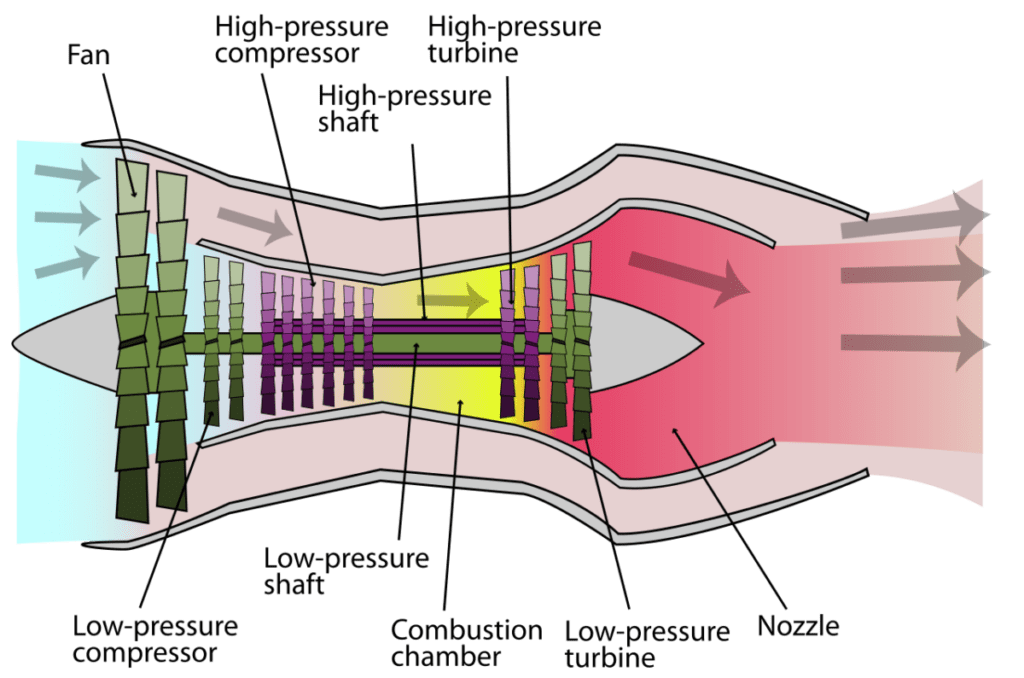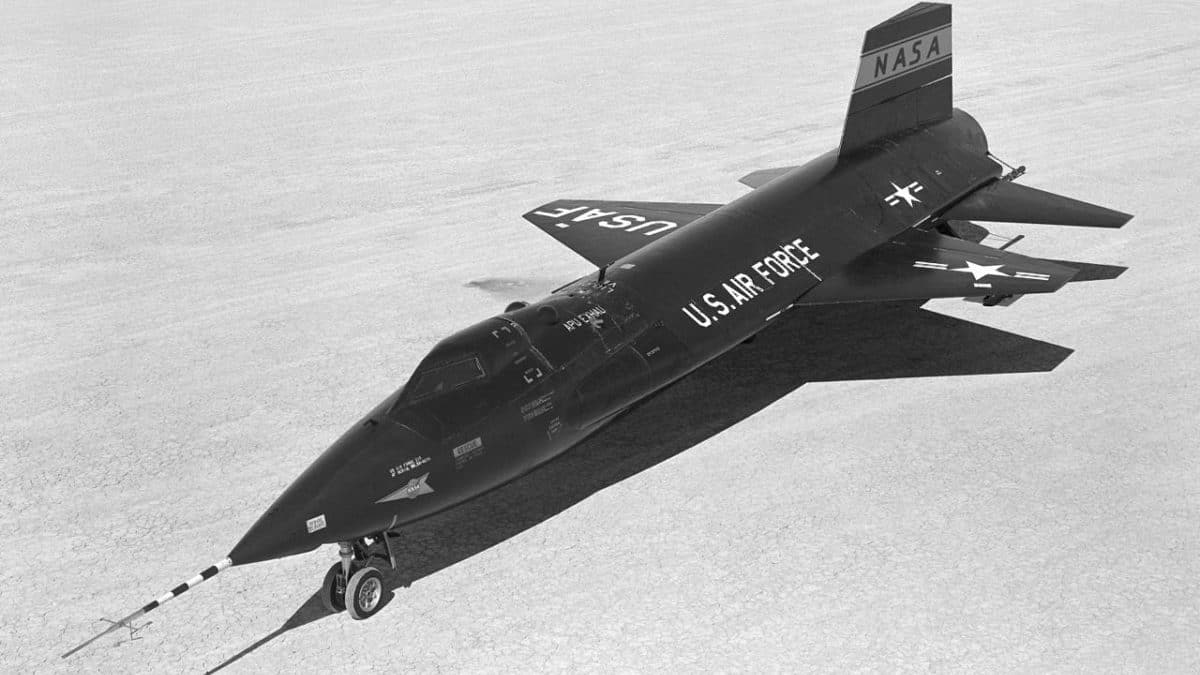
Sitting at 35,000 feet on a chair moving at speeds of up to 620mph, one would wonder if man could possibly achieve more. Yes, man has achieved far more by putting several men on the moon, and much more in the vast void of space. So, can your normal commercial plane fly into space, even by mistake?
Commercial airplanes are unable to fly in space due to the lack of air molecules for the wings to work on to produce lift, the airfoils to maneuver the aircraft as well as the engines to mix with fuel to produce the required thrust. Rockets and boosters are the current technology of space-bound aircraft.
Space is considered to start at around the 62mile/100km mark above sea level and this boundary is referred to as the Karman Line. As many of you may know, Space is devoid of air, and depending on your proximity to Earth, you will experience little to no gravity.
The following factors come into play when you try putting a plane in space:
- Aerodynamic Lift
- Combustion and Thrust
- Escape Velocity, Re-entry, and Airframe Capability
- Pressurization
- The efficiency of Control Surfaces
Is Aerodynamic Lift Possible in Space?
Lift is created by an aircraft’s wings creating a pressure difference as the air molecules pass over them. In space, the total absence of air molecules means there are no molecules for the wings to work on thus no lift is created. Most commercial airplanes are limited to around 40,000 feet.
The basic principle of powered flight is gaining lift via a pressure difference between the upper and lower surfaces of an aircraft’s wings. The cross-section of an aircraft’s wings is designed to have an aerofoil shape; on most wings, the top is curved while the bottom is flat. The top part, therefore, has a larger surface area, therefore, as the wing cuts through the air, airflow over the top of the wing moves faster to cover the longer distance.
In accordance with Bernoulli’s Principle, the air moving faster has lower pressure. The air on the underside of the wing has higher pressure and because air pressure is always trying to move from an area of low pressure to higher pressure to reach equilibrium it, therefore, moves the wing upwards and the rest of the plane along with it.
To allow an airplane to fly its wings must be propelled through the air to generate enough lift to overcome the entire weight of the aircraft.
As a plane ascends, the air around it becomes less dense, and as so, most commercial airplane engine manufacturers design their engines to be the most fuel-efficient at around 35,000 feet as this is where most airplanes spend the majority of their time during the flight.
Going further above this cruising altitude, the air density rapidly decreases. A plane flying at normal cruising speed would constantly pitch down if it tried to break its absolute ceiling as the wings are not able to generate enough lift for the plane’s weight. Most commercial airplanes have a service ceiling ranging between 38,000 feet to 41,000 feet with super jumbos like the A380 and B747 going up to around 43,000 feet. Above these ceiling altitudes, a plane would not be able to do a constant climb of 100 feet per minute.
This lack of air density is what limits the amount of lift an airplane’s wings can generate.
Learn More…
Try These Articles:
* This Is Why Plane Windows Are So Small!
* How Do Airplanes Not Freeze In Flight?
Can Thrust be Produced by Combustion in Space?
Rockets and planes are similar in that the combustion that produces their thrust requires oxygen and some sort of fuel, say, jet fuel. Without oxygen, the fuel would not ignite.
The gas turbine engines that propel today’s modern commercial airplanes require oxygen to mix with fuel to produce thrust. As airplanes begin to climb above 45,000 feet the density of air molecules available dramatically reduces meaning the amount of thrust that can be reduced is also dramatically reduced.
The difference between space rockets and commercial airplane engines comes with respect to how the oxygen is obtained for combustion. Rockets carry their own liquid oxygen tanks while planes obtain the element as a component mixed in the atmosphere, quite similar to your lungs.

As the air gets less dense, gas turbine engines struggle to consume enough air to maintain their ordinary thrust-to-weight ratio. The higher the engine goes, the faster the engine’s intake fans need to spin to pull in the required volume of air. At a certain altitude, they reach their RPM limits. Above these limits, the engines would sustain irreversible damage from high centrifugal forces.
This lack of air density is what limits how much thrust an aircraft engine can produce.
Is Cabin Pressurization Possible in Space ?
Above 12,500 feet, the density of air is too low and the air pressure is not sufficient to drive oxygen molecules through the lining of your lungs. This results in an atmosphere that the human body cannot survive in, therefore any airplanes flying above this altitude are required to be artificially pressurized.
This is done using two systems:
- Using High-Efficiency Particulate Air filters (HEPA). This system recycles air already in the cabin and accounts for 40% of the air in the cabin.
- Using compressed air from the engine that is diverted into the cabin. This accounts for about 60% of the air in the cabin.
In this case, we are more interested in the air supplied by the engine. As you proceed towards space, the engines are unable to consume enough air to create this pressure for the cabin. without pressurization, passengers would experience hypoxia. Hypoxia is the deficiency of oxygen in body tissues and can cause impairment of organ functions and eventually death.
This lack of air density is why cabins on commercial aircraft are unable to maintain cabin pressure.

Join My Newsletter & Get Great Tips, Information and Experiences To Help You Become a Superb Pilot!
How Efficient are Aircraft Control Surfaces in Space?
Most commercial planes manoeuver using control surfaces such as ailerons, rudders, and spoilerons. These deflect air flowing past them to create an unbalanced force against that surface, causing the plane to change direction. Without sufficient air density, these control surfaces have nothing to work on.
Low air density at altitudes near the Karman Line reduces the forces produced by the airplane control surfaces. During a flight test in the X-15 near the Karman line, Neil Armstrong recounts that he couldn’t even make a turn. He says it felt like being a dolphin above the surface of the water with his fins completely useless.

To achieve sufficient aircraft maneuverability, a system like a Reaction-Control System would be needed.
A reaction-control system is what is used on almost all spacecraft today. It is a series of boosters mounted on each axis that use a propellant to fire into the atmosphere causing a thrust in the opposing direction.
By varying the amount of fire time and on which axis an aircraft can maneuver in a low to zero air density environment. To find out more about the Reaction-Control System click Here to go to its Wikipedia Page.
This lack of air density it what limits conventional aircraft maneuverability in space.
Escape Velocity, Re-entry, and Airframe Capability
The escape velocity of Earth is marked at 7 miles per second. That is a whopping 24,850 miles/40,000 km per hour! This means for any object to break through Earth’s atmosphere, escape Earth’s gravity and enter orbit, it must be moving at a minimum speed of 24,850mph. No commercial plane in existence can get close to this speed!
For comparison, the fastest commercial airplane ever built, Concorde, could only manage a top speed of 1,350mph / 2,179 km/h, while an A380 has a top speed of only 735mph / 1,180 km/h.
Even if such a plane managed to fly into space, it would never make it back in one piece. During re-entry, the space shuttle faced temperatures of up to 1650°C. Aluminium, which is the main component used to manufacture plane airframes, melts at 660°C.
To prevent the melting of a whole plane would require using a system such as covering parts of the airframe with Silica tiles. This would increase the plane’s weight and reduce the payload significantly. At this point, the number of passengers and cargo that could be carried make the cost of the flight unprofitable.
The speeds needed to escape Earth’s atmosphere and the heat shield required to survive re-entry make commercial airplanes unable to fly into space.
Learn More…
Try These Articles:
* How High Can You Go In a Helicopter? Can You Land On Mount Everest?
* This Is Why Pilots Reduce Thrust After Takeoff?


